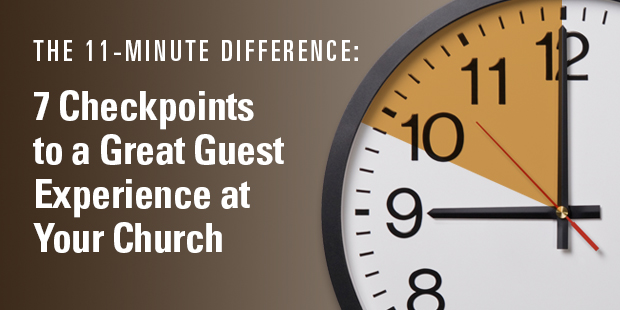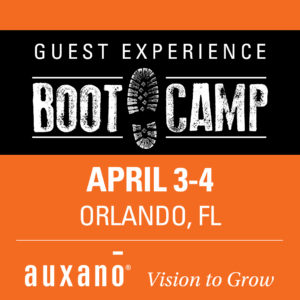
The 11-Minute Difference: 7 Checkpoints to a Great Guest Experience at Your Church
When a first time guest drives onto your campus, they will decide within 11 minutes whether or not they are coming back.
Yes, the decision is made before your guests experience worship and the content of the sermon- the two elements that demand most, if not all, of our time and attention in preparation.
What would it look like if you extended the same level of intention to the 11 minutes prior to walking in the sanctuary or worship center? Maybe the better question is “What would it feel like for your guests?”
It’s hard to overstate the wow factor a church body creates by serve generously through a system of hospitality. For the last 14 years our team has observed and analyzed over 500 churches while conducting a “secret worshipper” experience. It is a service at Auxano we call the “Guest Perspective Evaluation” and an essential part of our vision clarity consulting practice. One of my greatest thrills in ministry is tasting the variety of size, location, and spiritual heritage of these churches. But the most important observation is that any church can take small steps to make a dramatic difference in welcoming guests.
The first place to start is to imagine seven checkpoints for your guest. Think of the checkpoints as “gates” or even “hurdles” that any first time guest must navigate to get from their comfy family room to your worship service. With every gate comes a simple question: Has the church removed the inherent difficulty of navigating the gate for the first time, without “insider” knowledge of your church or church attendance in general?
More specifically I look for every opportunity to make each gate simple, easy and obvious to navigate. Any particular difficulties created by your location or facility should be viewed as hospitality opportunities. By providing a great solution to an obvious barrier, you enhance the wow-factor of the hospitality.
THE SEVEN CHECKPOINTS
#1 Before Departure: Are directions and service times immediately accessible to guests from your church website, phone recording and yellow pages?
#2 Travel to Location: Do guests know where to turn into your church location from the street?
#3 Parking Lot: Do guests know where to park?
#4 Building Entrance: Do guests know which exterior door to enter?
#5 Children’s Ministry: Do guests know where to take their kids?
#6 Welcome Center: Do guest know where to go for more information?
#7 Worship: Do guests know which interior door to enter?
Want to have a conversation with your team around the concept of the Seven Checkpoints? Here’s a tool that will help you!
Want to learn how to create an EXCEPTIONAL Guest Experience at your church? Check out Auxano’s Guest Experience Boot Camp in Cincinnati, OH on August 7-8.

If you are interested in how vision clarity impacts every aspect of your church – especially your Guest Welcoming systems and processes – start a conversation with the team at Auxano, and see how break-thru clarity can help you realize vision.

Tags: 7 Checkpoints, Church Guest Experience, Guest Experience, Guest Experience Boot Camp, The 11 Minute Difference, Will Mancini

































